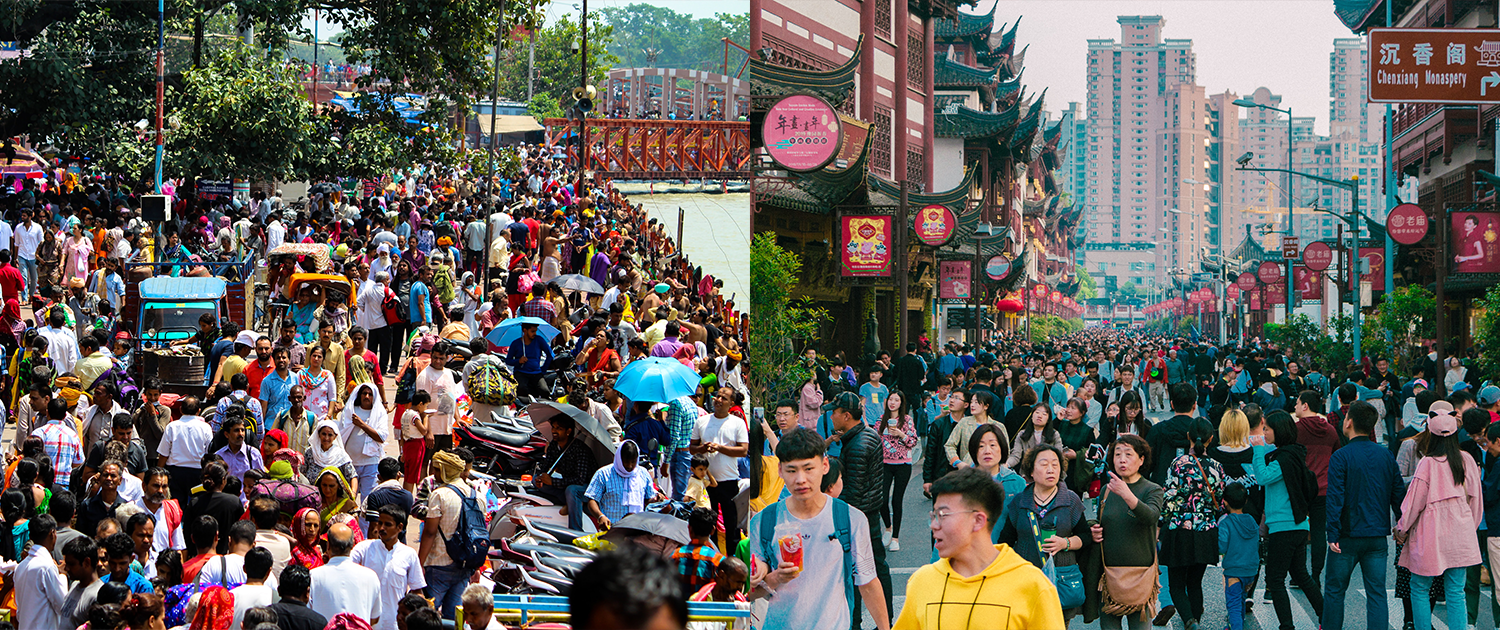The UN announced this week that India is about to surpass China as the world’s most populous nation in the coming days.
By the end of April 2023, India’s population is expected to reach 1,425,775,850 people, with projections indicating further growth for several decades more, the UN said. That’s slightly higher than China’s global record of 1.4 billion in 2022.
As can be seen in Figure 1, both India and China’s populations are more than 4x larger than the third most populous country in the world, USA (~339 million), and more than 10x larger than the 10th most populous country in the world, Mexico (~128 million).

While India is on the verge of passing China to be the most populous country, it has been leading the world in IPv6 capability for several years now. According to APNIC Labs, more than 78% of India’s Internet traffic transits via IPv6.
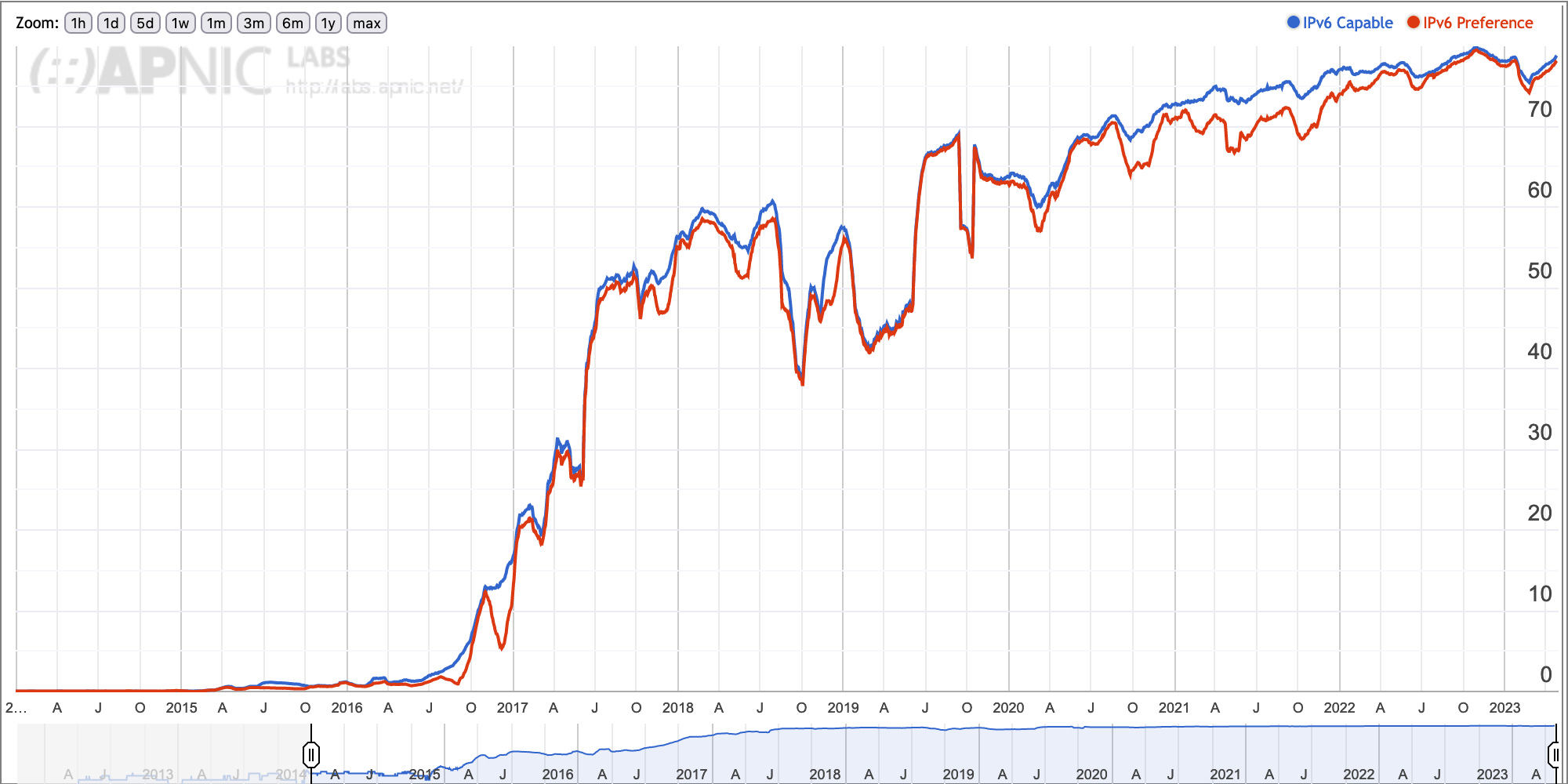
This growth has been largely driven by one network operator, Reliance Jio, which entered the market in 2016 as the first LTE, all-IP mobile network in India. This, combined with its aggressive strategy to become the leading mobile carrier, required Reliance Jio to deploy IPv6 from the outset. Slowly other providers and countries have also come to realise the benefits that IPv6 offers their business, specifically the ability to accommodate growth given IPv4 addresses have been exhausted.
Read: How does IPv6 solve the problem of IPv4 address exhaustion?
Early this month, reports out of China claimed that more than 700 million active Internet users were connecting via IPv6 as of the end of 2022, equating to roughly 50% of the total population. While these figures aren’t corroborated by APNIC Labs (Figure 3) or other foreign measurement tools, it has been widely reported that the Chinese government has set itself the goal of 100% IPv6 by 2030.
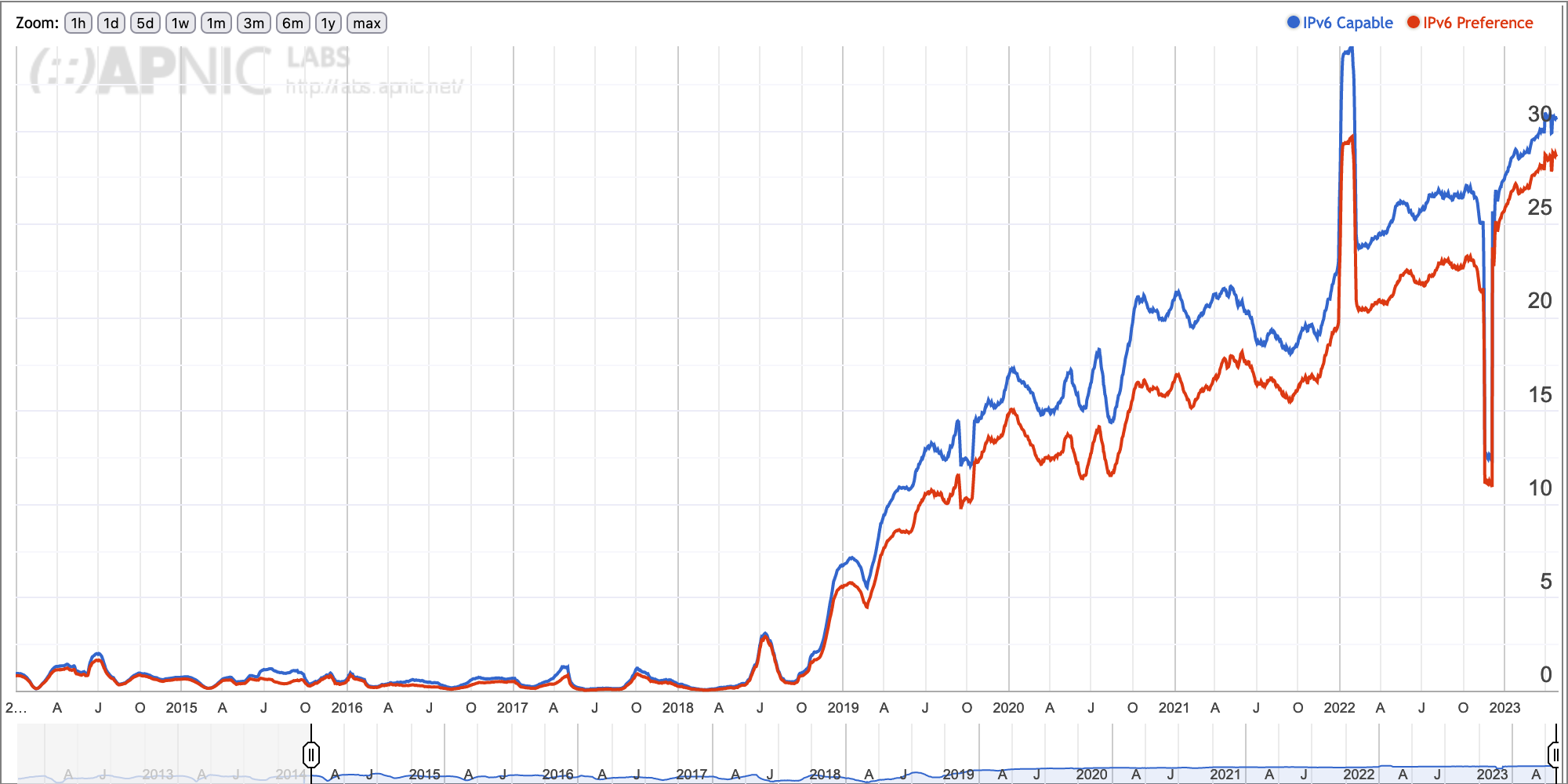
Given these two pieces of news, I wondered how much IPv6 is used by the other eight most populous countries. Interestingly, four of the 10 rank above the average global adoption rate of 40% (Figure 4).
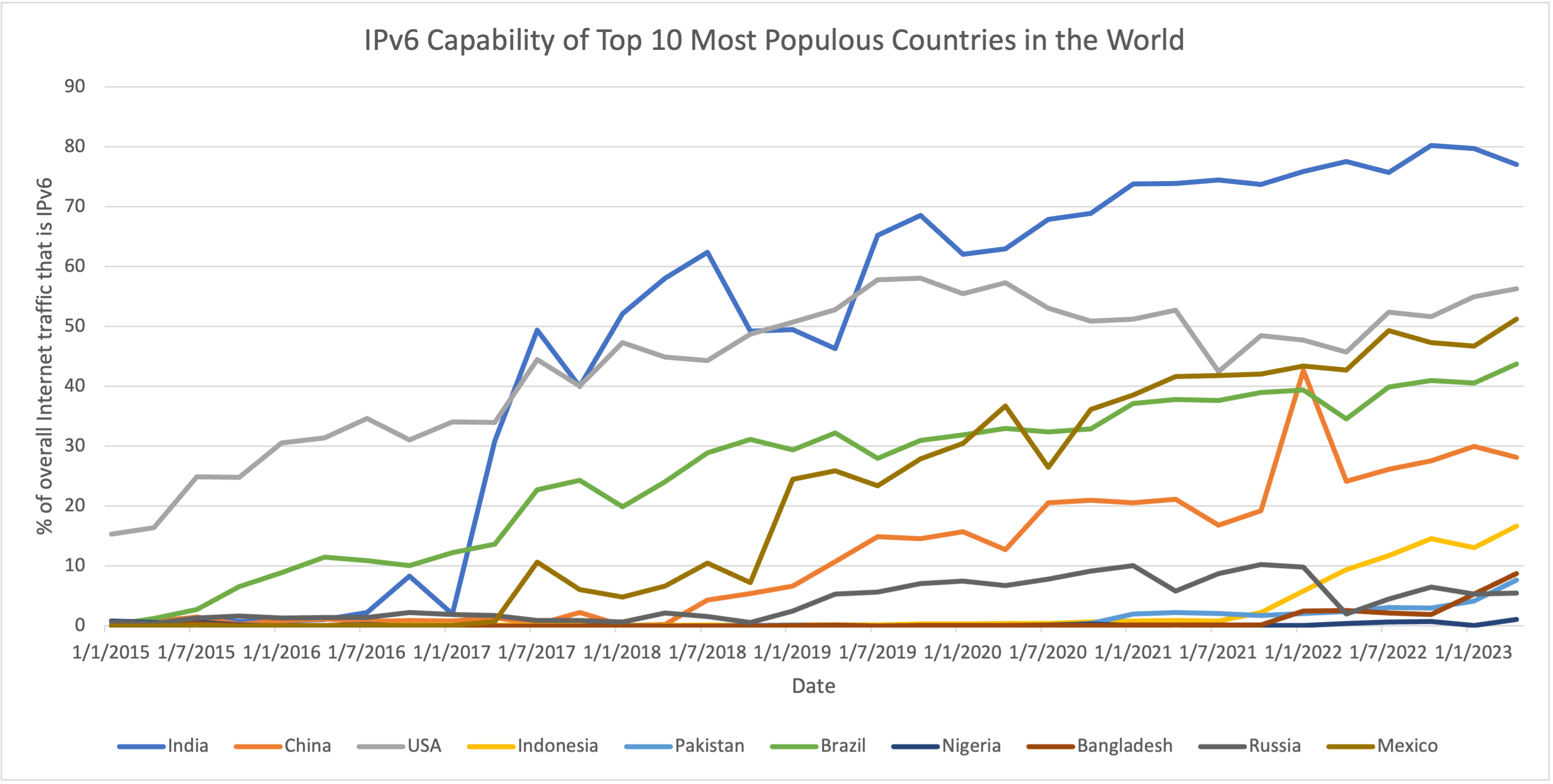
While the bottom five countries — Indonesia, Pakistan, Nigeria, Bangladesh, and Russia — seem to be well behind, if we zoom in to look at them in the last four years (Figure 5), we can see there has been quite a bit of recent movement.
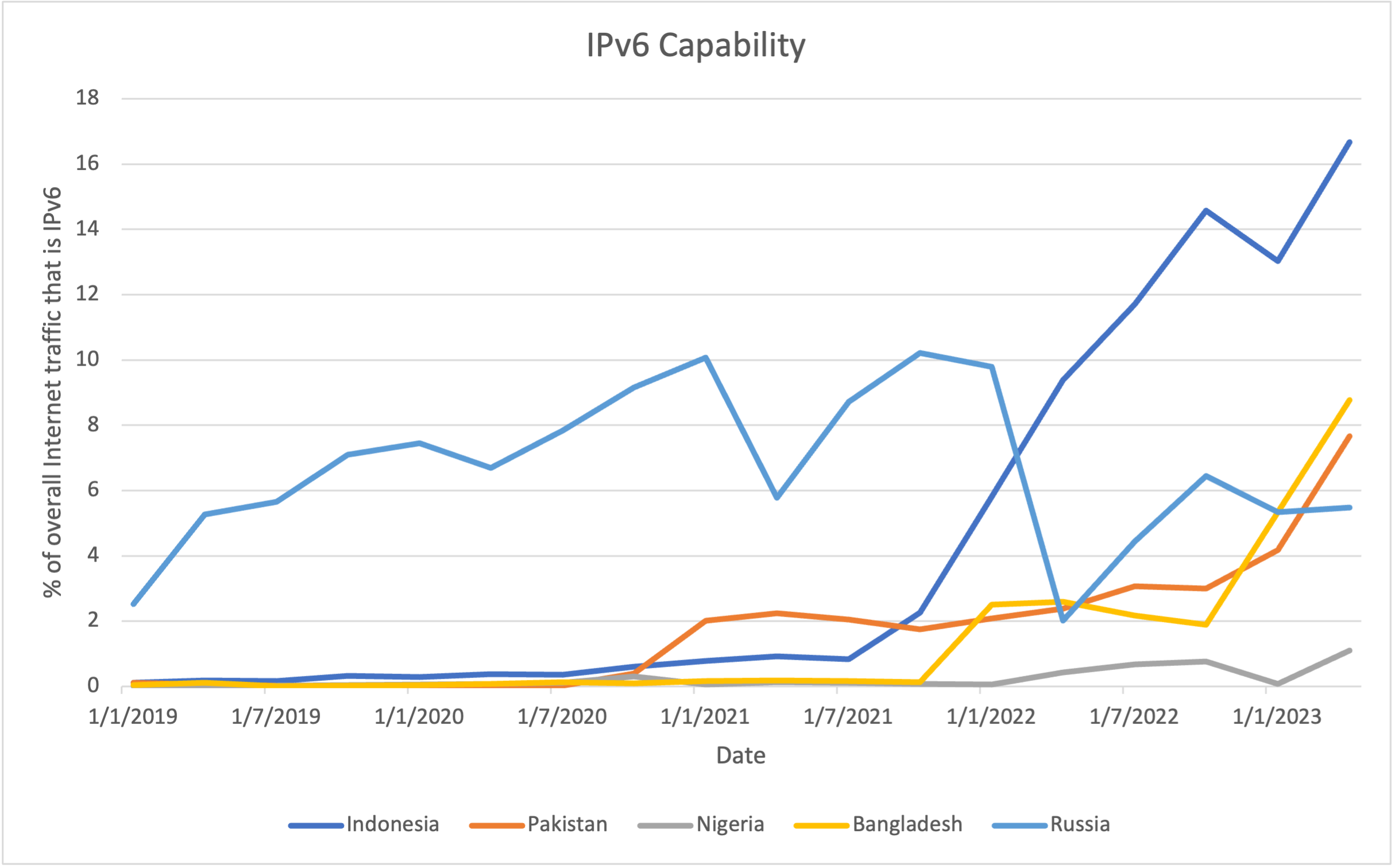
When interpreting this data, it’s important to also consider the Internet penetration of these countries (Figure 6). For example, while India has a higher percentage of IPv6 users, its overall number of Internet users is lower. This goes some way to explain China’s claim of 700M IPv6 users.
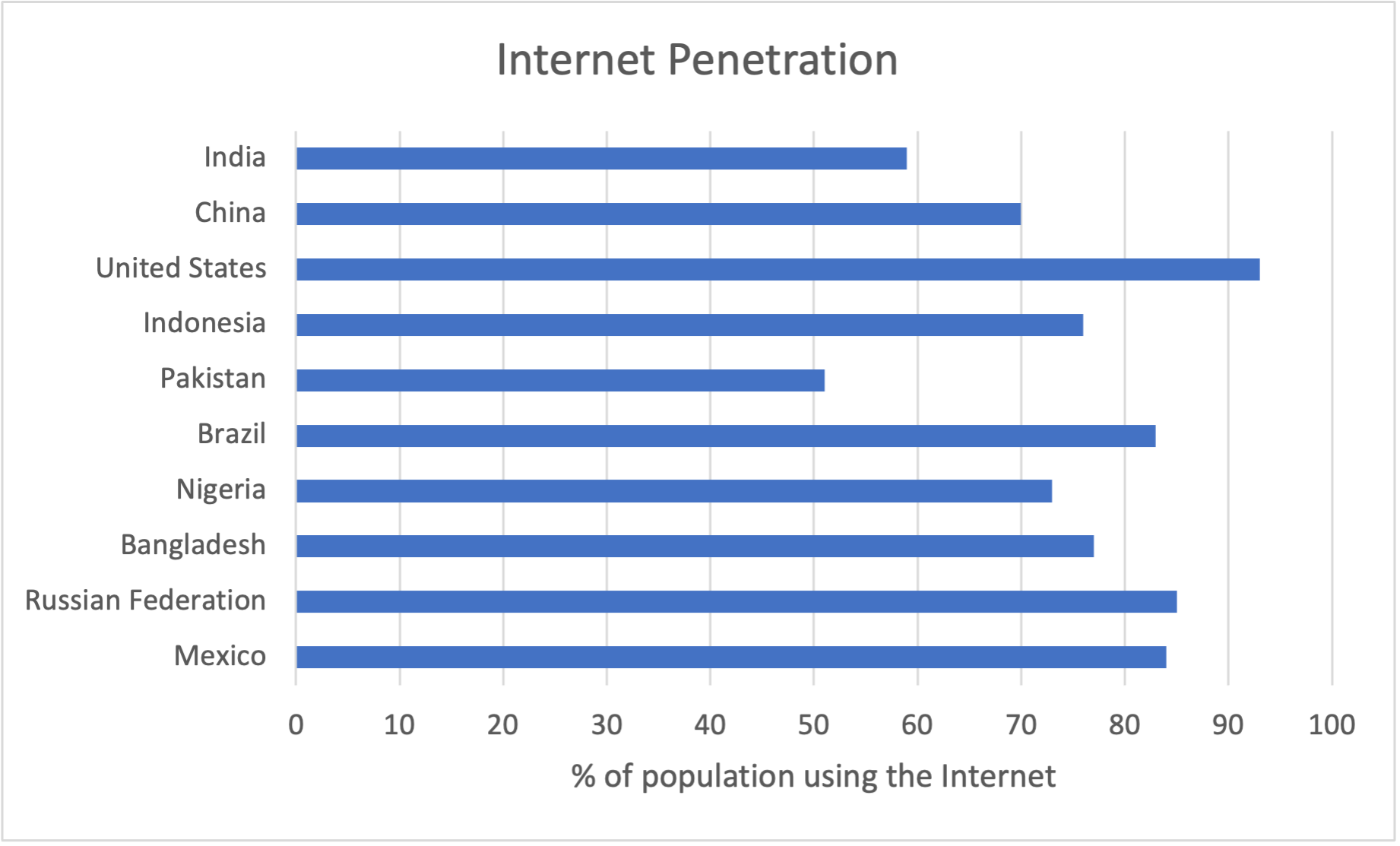
As we’ve seen in the past, a country’s IPv6 capability can grow quickly once leading ISPs start to deploy it across their user network. We’ll be watching this space as well as how other rapidly growing populations seek to make their networks more resilient.
Photos by Javier Quiroga and Shashank Hudkar on Unsplash.

